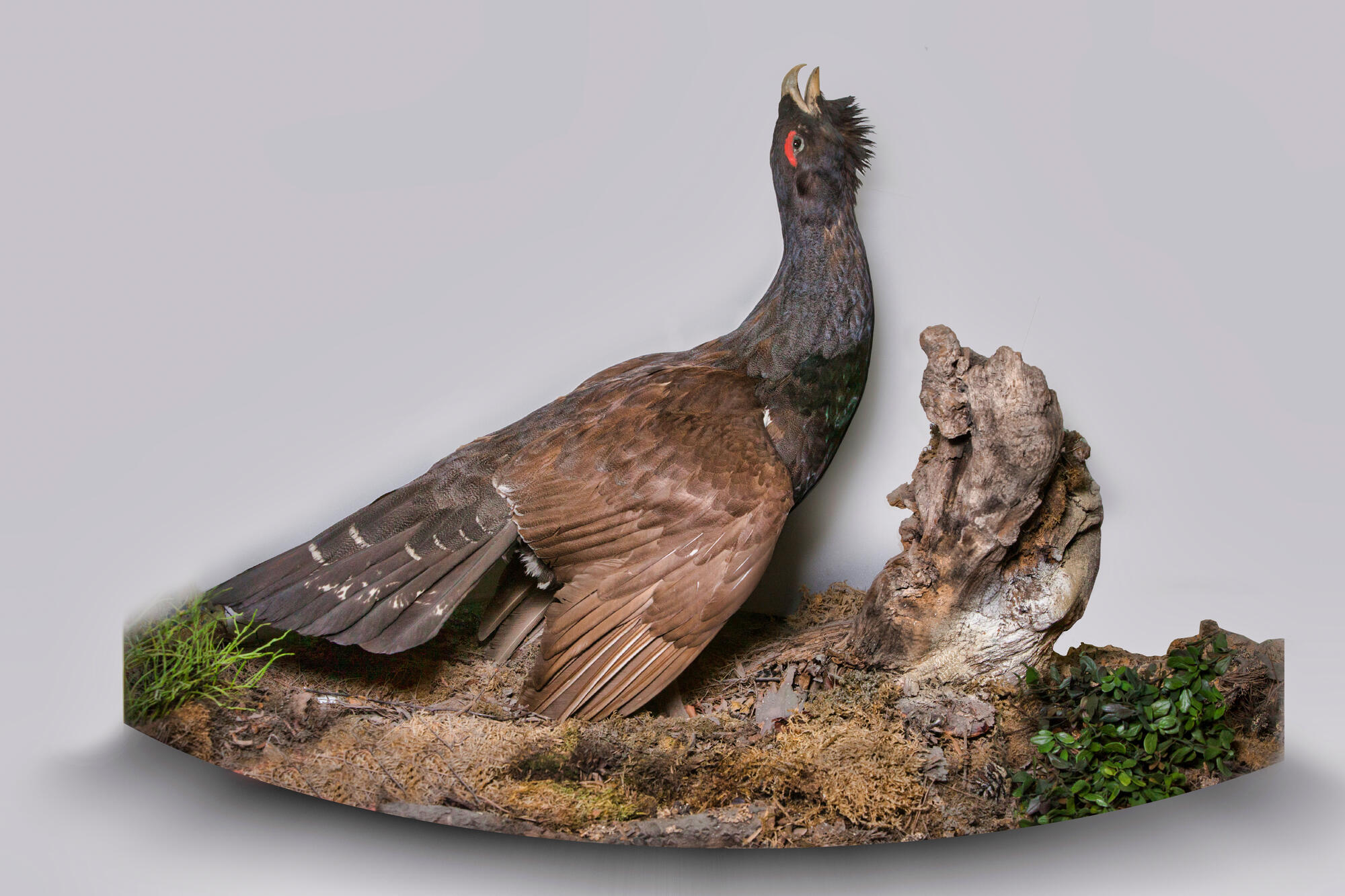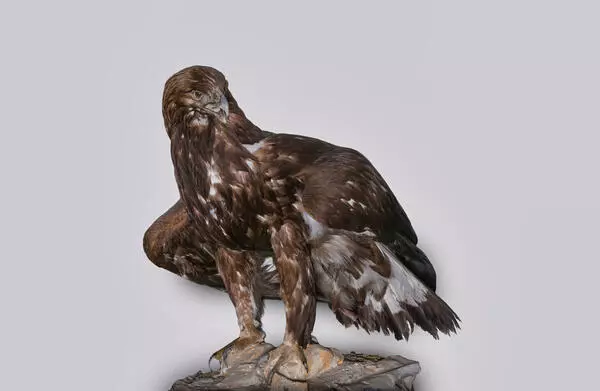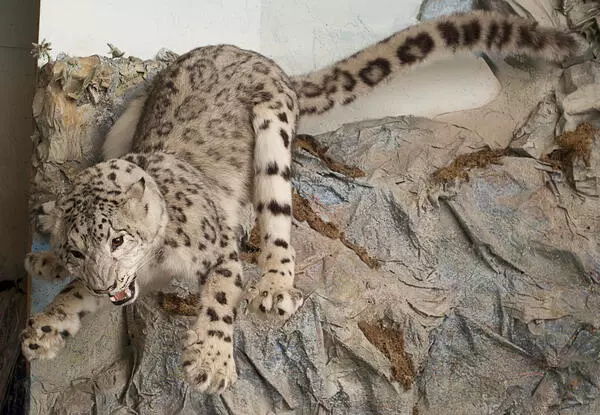Wood grouse inhabit the north of European Russia and Western Siberia and prefer coniferous and mixed forests, more rarely deciduous forests. This is a large bird of the pheasant family: males grow up to 110 centimeters and weigh from four to six kilograms. Females weigh from one and a half to two kilograms and are about half a meter tall.
A powerful curved light beak and a long rounded tail distinguish male wood grouse. The beak of females is smaller and darker. As a rule, males are multicolored: they have a black head and tail, dark gray with white mottling sides and belly, brown wings, a dark green chest and bright red eyebrows. Also, only males have a ‘beard’ — long feathers under the beak. Almost all grouse have a white spot at the base of the wing and white markings on the tail. The females' bodies are dark brown with large ochre and white mottles, and some individuals have a red breastplate.
The showcase ‘Forest and Swamp Landscape’ of the Biology museum shows wood grouse during spring courting — a complex mating ritual, which includes certain poses, dances and song.
The courtship display begins in March or April. By night, the males come together, sit on the ground, and make a lot of noise with their wings. Then each wood grouse flies up to a tree, sits on a branch, throws back his head and sings, gradually moving further from the trunk. Continuing to sing, it flies down to the ground, spreads its wings slightly, and spreads its tail like a fan. The сourting males compete with each other to show off their best. Often competitions turn into fights.
The mating song of the wood grouse consists of two parts. First, he clicks, making sounds similar to the tapping of bamboo sticks. It goes on for a long time, and then for a few seconds it chirps — makes a characteristic creaking sound, as if someone is sharpening a knife. During this squeaking, the bird’s ear canal is blocked, and it temporarily becomes deaf. This is where the name of the bird in Russian “gluhar” (deaf) comes from.
Hunters take advantage of the temporary deafness of males. Sneaking, they move closer to the mating site and shoot as long as they can hear its sound. If the hunter misses, the creaking grouse will not hear the shot and will not fly away.
Females fly to the mating site in the middle of the mating season. They immediately begin to build nests in the grass, under bushes and trees. Females hatch a clutch for about a month, which may contain 4 to 15 eggs. Mothers take care of their nestlings just for a short time — by one month of age, they are already able to fly and find their own food.
A powerful curved light beak and a long rounded tail distinguish male wood grouse. The beak of females is smaller and darker. As a rule, males are multicolored: they have a black head and tail, dark gray with white mottling sides and belly, brown wings, a dark green chest and bright red eyebrows. Also, only males have a ‘beard’ — long feathers under the beak. Almost all grouse have a white spot at the base of the wing and white markings on the tail. The females' bodies are dark brown with large ochre and white mottles, and some individuals have a red breastplate.
The showcase ‘Forest and Swamp Landscape’ of the Biology museum shows wood grouse during spring courting — a complex mating ritual, which includes certain poses, dances and song.
The courtship display begins in March or April. By night, the males come together, sit on the ground, and make a lot of noise with their wings. Then each wood grouse flies up to a tree, sits on a branch, throws back his head and sings, gradually moving further from the trunk. Continuing to sing, it flies down to the ground, spreads its wings slightly, and spreads its tail like a fan. The сourting males compete with each other to show off their best. Often competitions turn into fights.
The mating song of the wood grouse consists of two parts. First, he clicks, making sounds similar to the tapping of bamboo sticks. It goes on for a long time, and then for a few seconds it chirps — makes a characteristic creaking sound, as if someone is sharpening a knife. During this squeaking, the bird’s ear canal is blocked, and it temporarily becomes deaf. This is where the name of the bird in Russian “gluhar” (deaf) comes from.
Hunters take advantage of the temporary deafness of males. Sneaking, they move closer to the mating site and shoot as long as they can hear its sound. If the hunter misses, the creaking grouse will not hear the shot and will not fly away.
Females fly to the mating site in the middle of the mating season. They immediately begin to build nests in the grass, under bushes and trees. Females hatch a clutch for about a month, which may contain 4 to 15 eggs. Mothers take care of their nestlings just for a short time — by one month of age, they are already able to fly and find their own food.








